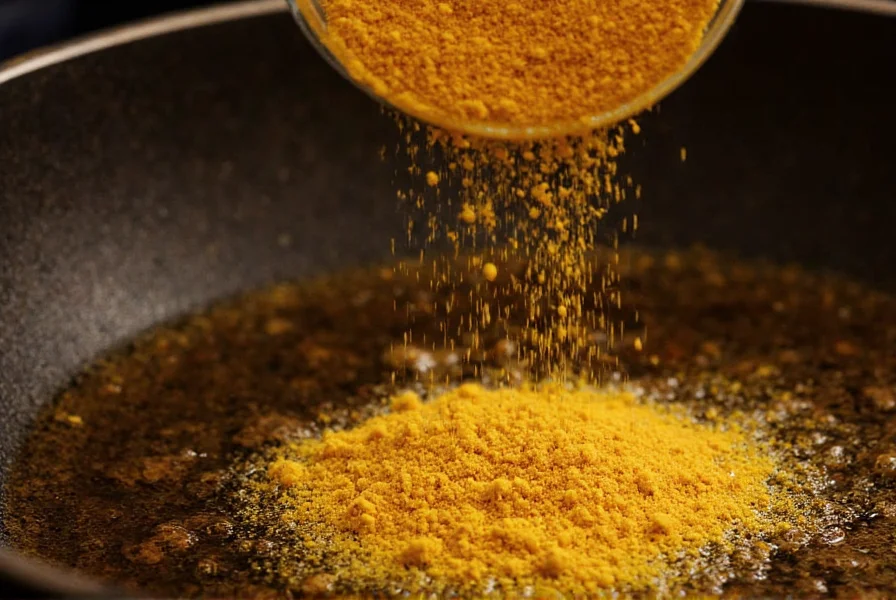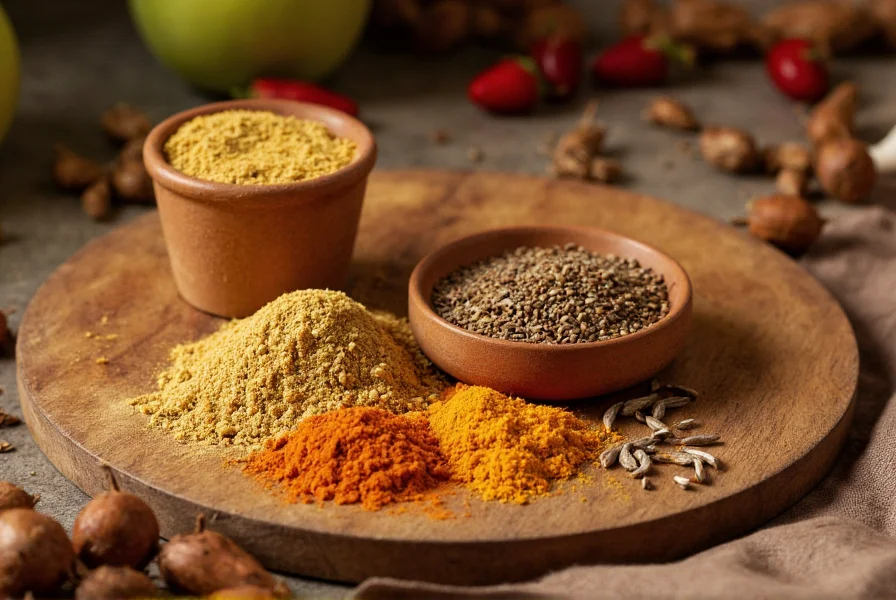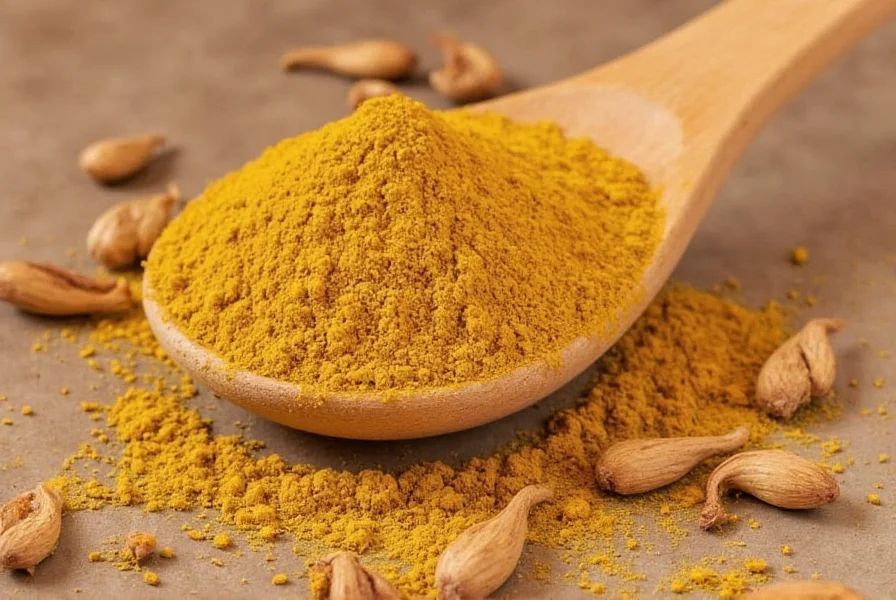Hing, also known as asafoetida powder, serves as a cornerstone in Indian culinary traditions with a history spanning centuries. This potent spice originates from the dried latex (gum oleoresin) exuded from the roots and stem of several species of Ferula, a perennial herb in the celery family. Understanding what is hing asafoetida powder reveals its unique position in global spice pantheons—it's not merely a seasoning but a functional ingredient with both culinary and digestive properties.
The transformation from raw resin to usable powder involves a meticulous process. Harvesters make incisions in the plant's roots, collecting the milky sap that oxidizes into a rubbery mass. This resin undergoes aging, then gets purified and mixed with flour or rice to create the familiar yellow powder found in kitchens worldwide. Pure asafoetida powder contains no additives, while compounded versions include wheat or rice flour to moderate its intense flavor.
| Form | Concentration | Shelf Life | Best For |
|---|---|---|---|
| Pure resin | 100% | 2+ years | Chefs, small-batch cooking |
| Standard powder | 30% resin | 1 year | Everyday home cooking |
| Gluten-free powder | 30% resin | 1 year | Special dietary needs |
The Culinary Science Behind Asafoetida Powder
Mastering how to use asafoetida powder in cooking requires understanding its chemical transformation. The raw compound ferulic acid converts during cooking into flavorful vanillin derivatives. This metamorphosis explains why adding hing to hot oil at the beginning of cooking yields completely different results than sprinkling it on finished dishes.
Traditional Indian tempering (tadka) follows precise methodology: heat 1-2 teaspoons of oil or ghee, add 1/8-1/4 teaspoon of hing powder, and cook for 30-60 seconds until the pungent smell mellow. This technique unlocks umami compounds while neutralizing the initial sulfurous odor. Overheating causes bitterness, while insufficient cooking leaves unpleasant raw notes.

Health Benefits Supported by Tradition and Science
Exploring the benefits of hing powder reveals why Ayurvedic practitioners have valued it for millennia. Modern research confirms traditional claims about its digestive properties. A 2022 study in the Journal of Ethnopharmacology demonstrated asafoetida's effectiveness in reducing intestinal spasms and gas formation.
The spice contains coumarin compounds that relax smooth muscle tissue in the digestive tract. This explains its traditional use for:
- Relieving bloating and flatulence
- Reducing symptoms of IBS
- Enhancing nutrient absorption
- Supporting respiratory health during cold season
Unlike many traditional remedies, asafoetida's effects manifest quickly—within 15-20 minutes of consumption. However, those on blood thinners should consult physicians before regular consumption due to potential interactions.
Practical Usage Guide for Home Cooks
Perfecting cooking with asafoetida powder involves precise measurements and timing. The standard conversion is:
- 1 clove garlic = 1/8 teaspoon hing powder
- 1 small onion = 1/4 teaspoon hing powder
- Resin to powder: 1 small pea-sized resin = 1/4 teaspoon powder
For authentic traditional uses of hing in lentil dishes (dal), add during tempering with cumin seeds. In vegetable stir-fries (sabzi), incorporate when cooking the aromatics. Baking applications require careful measurement—exceeding 1/8 teaspoon per serving typically creates overpowering results.

Finding Suitable Substitutes
When considering asafoetida powder substitutes, recognize that no single alternative replicates its complex flavor profile. The best replacement depends on your dietary needs and recipe requirements:
- For onion/garlic replacement: 1:1 blend of garlic powder and onion powder (not suitable for Jain diets)
- Vegan alternative: 1 teaspoon nutritional yeast + 1/4 teaspoon garlic powder
- For digestive benefits: 1 teaspoon ginger tea consumed with meals
- In lentil dishes: 1/2 teaspoon ajwain (carom seeds) + pinch of turmeric
Understanding the difference between hing resin and powder helps determine substitution ratios. Resin delivers more intense flavor, requiring smaller quantities. When substituting resin for powder, use one small pea-sized piece (about 1/4 inch) for every 1/4 teaspoon of powder called for in recipes.
Purchasing and Storage Best Practices
Selecting quality product when buying pure asafoetida powder requires attention to detail. Look for:
- Deep golden-yellow color (avoid brownish hues indicating age)
- Strong initial odor that transforms when heated
- "100% pure" labeling for resin products
- "Gluten-free" certification if needed
Proper storage maintains potency. Keep in an airtight container away from light and moisture. Quality hing powder retains freshness for 12-18 months, while resin lasts 2-3 years. Refrigeration extends shelf life but may cause clumping in powdered forms.
Frequently Asked Questions
Can I use asafoetida powder if I have a garlic allergy?
Yes, asafoetida powder contains no actual garlic compounds. It provides a similar flavor profile through different chemical compounds (sulfides rather than allicin). However, consult your allergist if you have severe sulfite sensitivity.
Why does my asafoetida powder smell bad?
Raw asafoetida naturally has a strong sulfurous odor reminiscent of rotten eggs. This transforms completely when cooked in oil—the pungency disappears, leaving a savory umami flavor. The unpleasant smell indicates freshness; odorless powder has likely lost potency.
How much asafoetida powder equals one garlic clove?
Use 1/8 teaspoon of asafoetida powder to replace one medium garlic clove. For resin, use a pea-sized piece (about 1/4 inch). Always add hing to hot oil at the beginning of cooking for proper flavor development.
Is asafoetida powder good for digestion?
Yes, multiple studies confirm asafoetida's digestive benefits. Its compounds relax intestinal muscles, reducing gas and bloating. Traditional Ayurvedic practice recommends 1/4 teaspoon mixed with warm water after meals for digestive support, though modern usage typically incorporates it into cooking.
Can I make my own asafoetida powder from resin?
Yes, but requires careful preparation. Grind pea-sized resin pieces with equal parts rice flour or wheat flour using a dedicated spice grinder. The 1:1 resin-to-flour ratio creates standard potency powder. Store in an airtight container away from light for best results.











 浙公网安备
33010002000092号
浙公网安备
33010002000092号 浙B2-20120091-4
浙B2-20120091-4